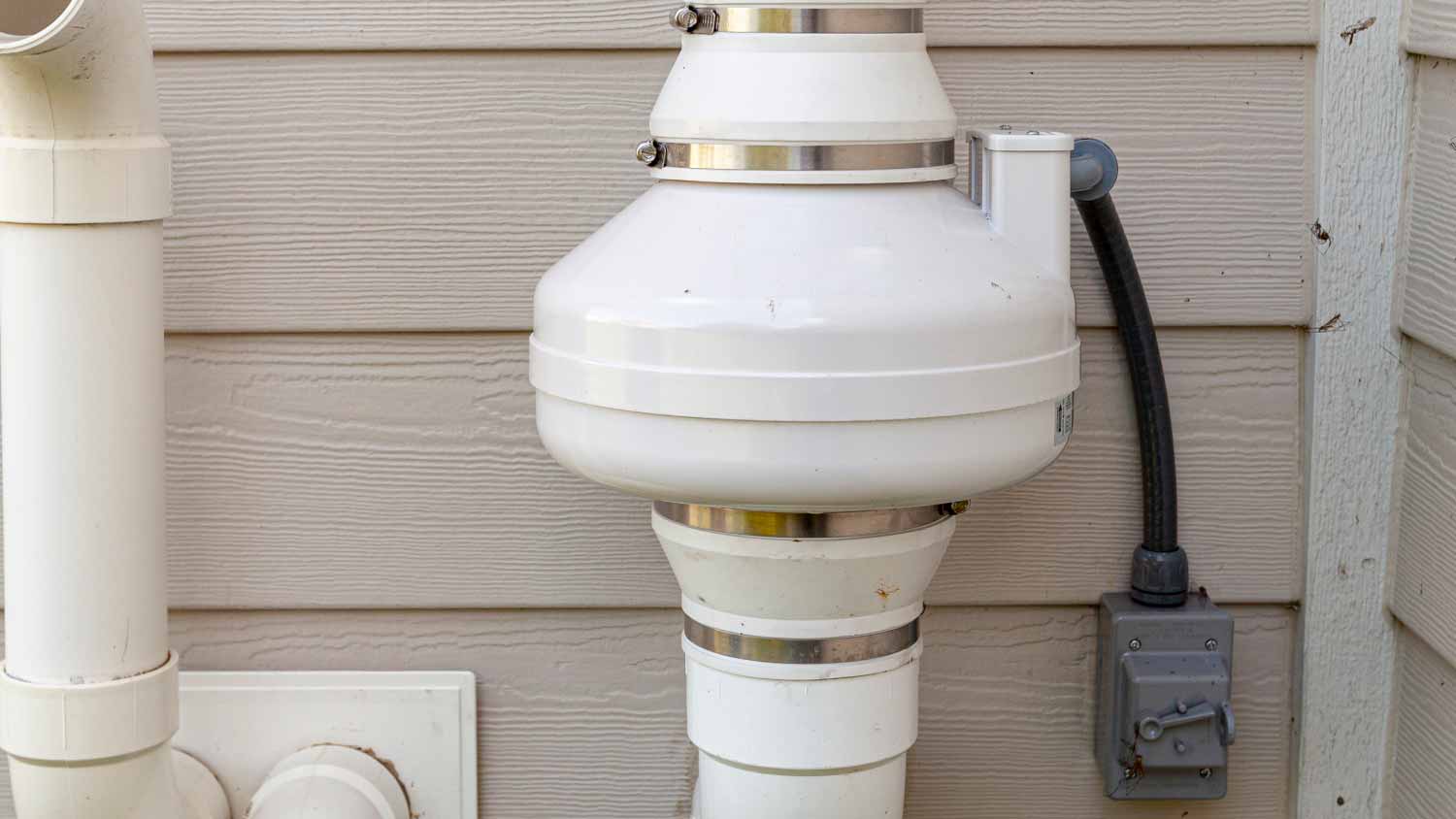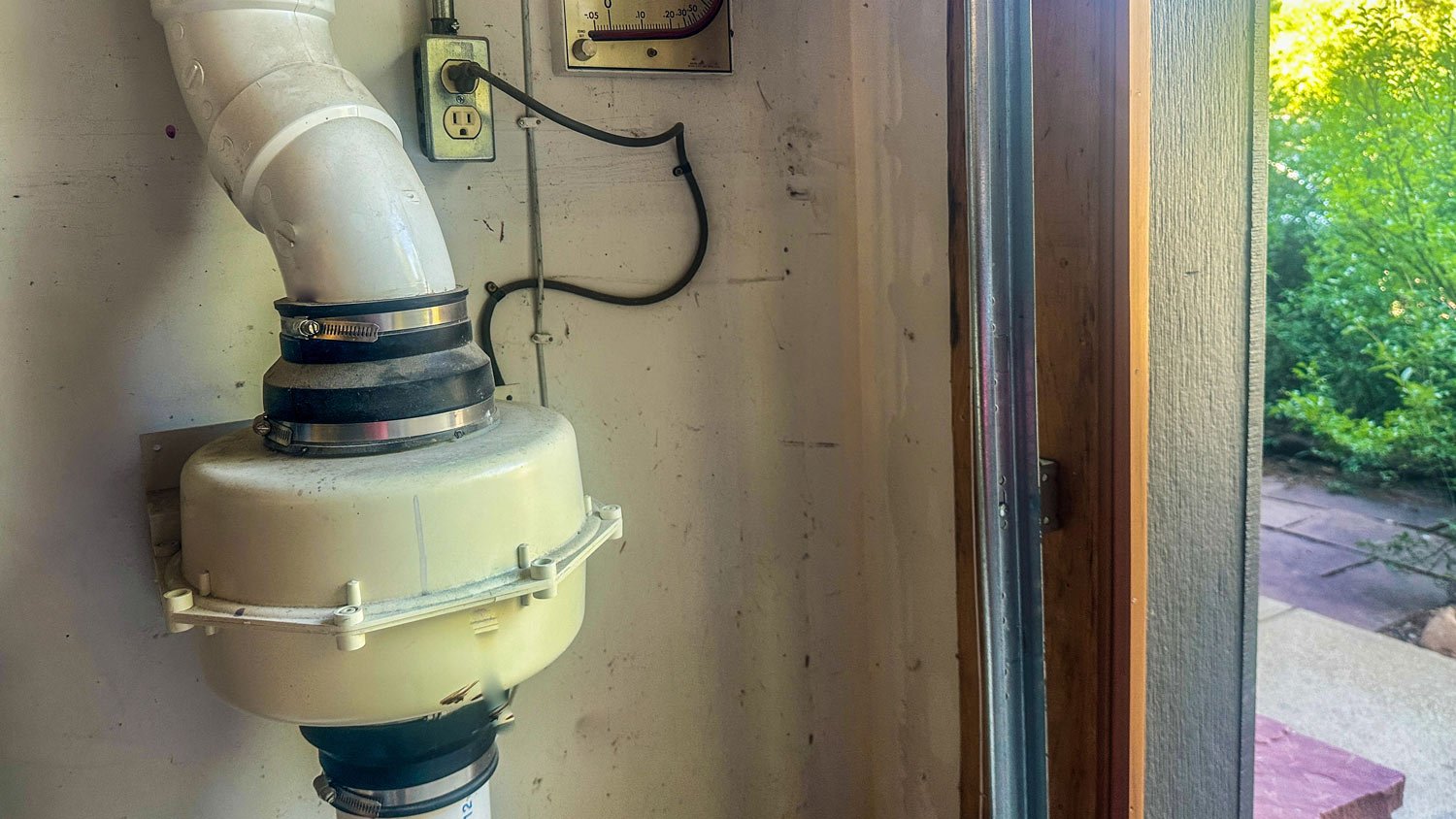Radon Mitigation System Diagram: Understanding How It Works
A safe peak inside this critical home system


Radon mitigation systems feature six components.
Radon mitigation systems can use sub-slab suction, drain tile suction, or be sub-membrane.
A radon mitigation system costs $800 to $1,280, on average.
Radon mitigation systems protect your home and family from the dangers of radon gas, a leading cause of lung cancer in non-smokers. These systems vent radon from beneath your home’s foundation to the outside, ensuring it does not accumulate to harmful levels indoors. Learn about a radon mitigation system diagram to understand how its parts work.
What Are the Different Parts of a Radon Mitigation System and How Do They Work?
A radon mitigation system reduces radon gas levels in your home using a vent pipe system and a fan. The system draws radon from beneath the house and vents it safely outside, preventing it from entering your home.
Randon mitigation systems can be active or passive, but there are three main types of radon mitigation systems. While the parts are the same for all, their location is what differentiates them. Sub-slab suction extracts radon directly from under the foundation, while drain tile suction pulls soil gases through a pipe in the drain tile with covered sump baskets for containment. For crawl spaces, a sub-membrane system uses a sealed plastic sheet to trap soil gas, which is then vented outside through a radon pipe.
Below are each of the system's parts and how they operate to keep your home free from radon.
Radon Fan
The radon fan is installed in an unconditioned space to prevent radon gas from leaking back into the home. It is powered by an electrical connection, either through an electrical junction box or by being hardwired into the home’s electrical system. The radon fan maintains a constant suction force, pulling radon gas from beneath the home and venting it safely outside.
U-Tube Manometer
A U-tube manometer is a simple device used to check if the radon mitigation system’s fan is functioning properly. It consists of a clear tube filled with liquid that shows a pressure difference when the fan is operational. If the liquid levels are uneven, it indicates the fan is creating suction, meaning the system is working.
Radon System Tag
Once the radon mitigation system is installed, a licensed radon professional attaches a radon system tag. This tag provides essential information, including the installer’s name, contact details, installation date, and license number. The tag certifies proper installation and serves as a point of reference for future maintenance or system checks.
Active Notification Monitor
An active notification monitor is a safety feature that alerts you when the radon fan isn't operating correctly. This monitor uses sound or visual alarms to signal fan malfunctions. This safety feature ensures any issues with the system are promptly addressed.
Radon Pipe
The radon pipe, made of PVC, carries radon gas from beneath the home to a safe location outside. It must meet strict guidelines, being at least 10 feet above the ground, 10 feet from any windows, doors, or other openings, and extending above the roofline. These placement requirements prevent radon from re-entering the home or nearby structures.
Suction Pit
A suction pit is dug beneath the basement floor or foundation, allowing the radon pipe to collect radon gas directly from under the home. The fan then creates suction to draw the radon out of the pit and vent it safely outside. Proper sizing and placement of the suction pit are essential for optimal system performance.
How to Maintain a Radon Mitigation System

A pro should inspect your radon mitigation system regularly to make sure it’s doing its job. They should inspect the U-tube manometer to confirm that the fan is creating the proper suction. They may also listen for unusual fan noises and monitor the active notification monitor for anything out of the ordinary.
You should hire a radon testing pro near you every two years to check on the radon level in the home and ensure they’re within a safe range. The average radon testing costs between $150 and $720, though it varies based on the type of test performed.
Exposure to radon over a long period of time can cause serious health problems, including lung cancer. Lowering radon in your home requires professional knowledge and skills only available by hiring a radon mitigation pro.
Repairing vs. Replacing a Radon Mitigation System
Deciding whether to repair or replace a radon mitigation system depends on the extent of the issue, the system's age, and its effectiveness. If it's an isolated problem, such as a malfunctioning fan or a damaged pipe, a repair is sufficient. How long a radon fan lasts can vary, but five to 10 years is the average. If the fan is nearing the end of its life span, replacement would be the best long-term solution. Conduct a radon test before deciding—if levels remain high despite minor repairs, you should replace the system.
Replacement is better if the system is outdated or significantly damaged, especially if new mitigation technologies could provide more effective radon reduction. Structural changes to your home, like renovations or foundation work, may require a system upgrade to accommodate altered radon entry points.
The average radon mitigation system costs between $800 and $1,280. Radon remediation contractors install radon mitigation systems. These licensed radon pros can evaluate the system and recommend the best course of action.
Frequently Asked Questions
Radon mitigation systems are best installed in the basement or lowest level of your home where radon levels are highest. The system’s suction points should be strategically placed in areas like sump pits, crawl spaces, or beneath the concrete slab to maximize radon gas removal. The exhaust pipe should extend above the roofline, away from windows and air intakes, to safely disperse radon outside.
Installing a mitigation system reduces radon levels, which can cause lung cancer, providing peace of mind and long-term health benefits. It can also increase your home’s value, as many buyers prefer properties with radon safety measures in place. The investment is relatively low compared to the potential health risks associated with prolonged radon exposure.















